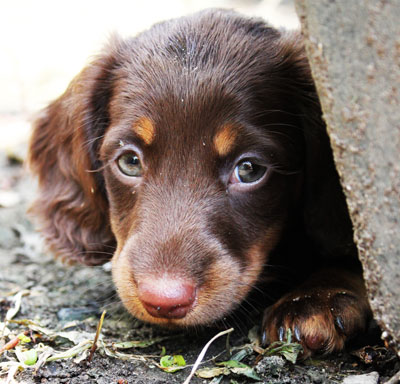All Nonfiction
- Bullying
- Books
- Academic
- Author Interviews
- Celebrity interviews
- College Articles
- College Essays
- Educator of the Year
- Heroes
- Interviews
- Memoir
- Personal Experience
- Sports
- Travel & Culture
All Opinions
- Bullying
- Current Events / Politics
- Discrimination
- Drugs / Alcohol / Smoking
- Entertainment / Celebrities
- Environment
- Love / Relationships
- Movies / Music / TV
- Pop Culture / Trends
- School / College
- Social Issues / Civics
- Spirituality / Religion
- Sports / Hobbies
All Hot Topics
- Bullying
- Community Service
- Environment
- Health
- Letters to the Editor
- Pride & Prejudice
- What Matters
- Back
Summer Guide
- Program Links
- Program Reviews
- Back
College Guide
- College Links
- College Reviews
- College Essays
- College Articles
- Back
Guiding Eyes for the Blind MAG
I was eight when I first heard about Guiding Eyes for the Blind. My neighbor was raising Joplin, an eight-week-old yellow lab puppy, to be a service dog for someone in need of a companion. As I watched Joplin grow and mature during that year, I decided I too wanted to be a puppy raiser.
My parents shot down the idea, claiming I was far too young. So I proceeded to beg them for the next four years. Finally, after sixth grade, I took matters into my own hands and sent in my application.
Hart, my rowdy black lab, arrived a month after my thirteenth birthday. He was 14 weeks old and almost 30 pounds. I was thrilled. Hart was my challenge pup, and I sure learned a lot from him. He was afraid of everything, so socialization had to be done slowly. Loose leash walking was tough at times, but over time he learned.
Hart was very high energy and goofy, but every time he wore the blue jacket of a working service dog, he was all business.
When I took Hart to his first Cornell hockey game, he showed me that he was a sure-fire hockey enthusiast. He was very upset when a couple sat in front of us, blocking his view. However, he solved the problem by resting his head on the woman's shoulder! She just laughed and gave him lots of attention as Hart watched the game.
Giving Hart back to Guiding Eyes for the Blind for formal training was one of the hardest things I've ever had to do. I'll never forget how horrible I felt when I shut his kennel door and walked away. It took every ounce of strength not to look back. Hart passed his test the same day I got my second puppy.
Pepe, my small and sweet yellow lab, was eight weeks old and 13 pounds when I brought him home. I was so glad to have Pepe immediately after Hart's departure, since he helped fill the void. In time, Pepe and I became a great team. He was similar to Hart in many ways; they both rested on my feet and followed me everywhere. But Pepe, though energetic, could settle down much more easily than my “Harty Boy.” My experience with Hart helped me tremendously with Pepe. I cannot wait to have more adventures with Pepe, as he continues his journey as a guide dog puppy in training.
My regional manager told me that Hart was released from guide dog training, along with the rest of his litter, due to stress. I had mixed feelings. I had wanted Hart to be a guide so badly, but I didn't want him to be miserable. In the end, the Bureau of Alcohol, Tobacco, Firearms and Explosives took Hart and his siblings. I was so happy that Harty would have a career; he loves working. He will become trained in either arson investigation or bomb detection.
I love puppy raising. I have met some wonderful people through the program, and have built excellent dog-handling skills. The biweekly puppy classes are something I look forward to. Yeah, it was hard to give up my dog, but I look at it positively. I may want the dog, but I don't need him. I feel blessed to have these dogs for 14 to 16 months. I have definitely become a more responsible person through this experience. Whatever my future brings, I hope it will involve Guiding Eyes for the Blind.

Similar Articles
JOIN THE DISCUSSION
This article has 0 comments.

Guiding Eyes for the Blind is an internationally accredited, nonprofit guide dog school with a 50-plus year legacy of providing the blind and visually impaired with superior Guiding Eyes dogs, training, and lifetime support services.
I am one of many volunteer puppy raisers who take on the huge commitment of raising a guide dog puppy. The process takes about 14 to 16 months. You recieve your pup around 8 weeks of age and attend classes in your puppy raising region. Puppy raisers provide loving homes for the pup to grow and mature. When the dog is around 18 months of age, it is called back to GEB, where he undergoes tests and training to see if he'd make a suitable guide dog. Some dogs go to other agencies like ATF, other guide dog schools, or they can become charished family pets. For more information, go to www.guidingeyes.org